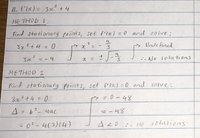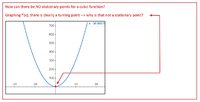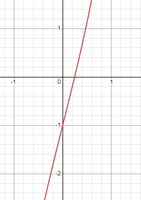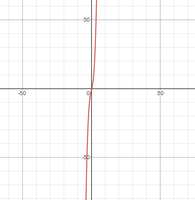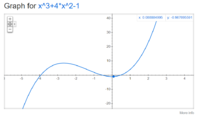Please refer to attachment 'Q1' for the question - I worked out how to do the question (refer to attachment A for my working) but I have some questions.
1. I do not understand the worked solution answer - refer to the red bracket in attachment 'Q1'. Why does a positive gradient function mean no stationary points ???
2. I do not understand the meaning behind it - please refer to attachment Q2 which has my questions.
Thank you!
1. I do not understand the worked solution answer - refer to the red bracket in attachment 'Q1'. Why does a positive gradient function mean no stationary points ???
2. I do not understand the meaning behind it - please refer to attachment Q2 which has my questions.
Thank you!

